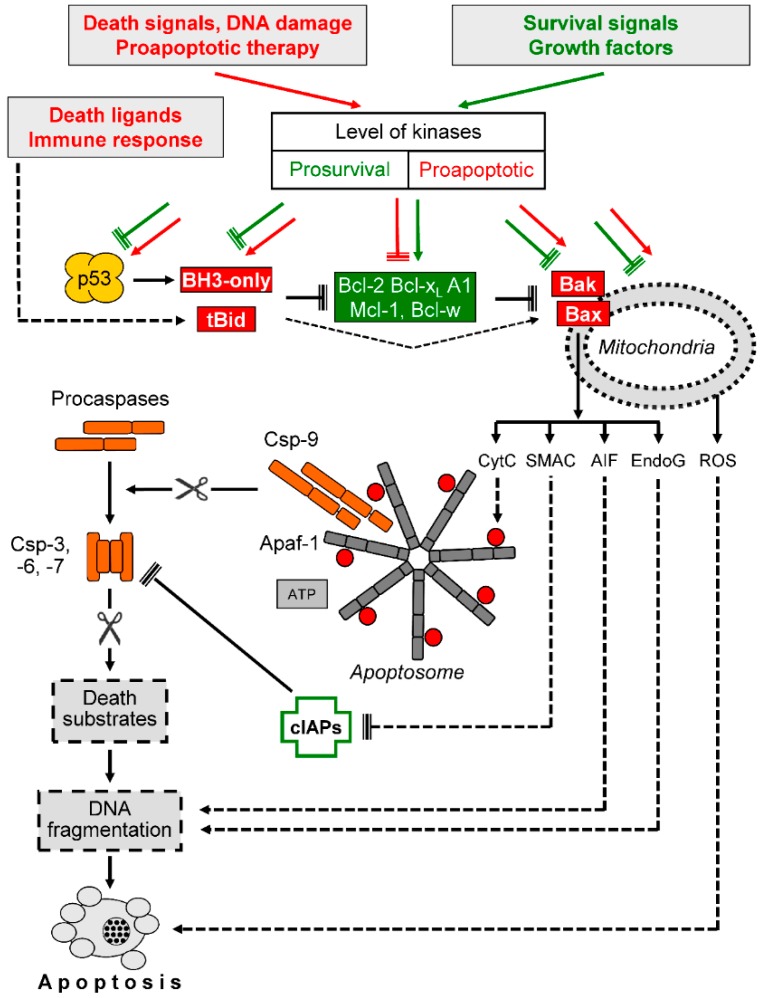Figure 3.
Intrinsic proapoptotic signaling. Death signals and survival signals affect the control level of cellular kinases in opposite directions (prosurvival and proapoptotic). Kinases may affect p53, proapoptotic BH3-only proteins, antiapoptotic Bcl-2 proteins (Bcl-2, Bcl-xL, A1, Mcl-1, Bcl-w), proapoptotic, multidomain Bcl-2 proteins (Bax and Bak) as well as mitochondrial functions. The BH3-only protein Bid is cleaved by caspase-8 in response to death ligands, resulting in activated, truncated Bid (tBid). The activation of Bcl-2 proteins results in the release of proapoptotic, mitochondrial factors such as cytochrome c (CytC), second mitochondria-derived activator of caspase (Smac), apoptosis-inducing factor (AIF), and endonuclease G (EndoG). In contrast, reactive oxygen species (ROS) production may result from mitochondrial dysfunction but appears as largely independent of Bcl-2 proteins. Further abbreviations: Csp-3, -6, -7, -9, caspases; cIAPs, cellular inhibitor of apoptosis proteins; Apaf-1, apoptotic protease activating factor; ATP, adenosine triphosphate. Arrowheads indicate activation while blunt ends indicate inhibition; scissors ( ) indicate protease activity. Proapoptotic factors and mechanisms are shown in red and orange, while antiapoptotic factors and mechanisms are shown in green. Further explanations are given in the text.
) indicate protease activity. Proapoptotic factors and mechanisms are shown in red and orange, while antiapoptotic factors and mechanisms are shown in green. Further explanations are given in the text.

